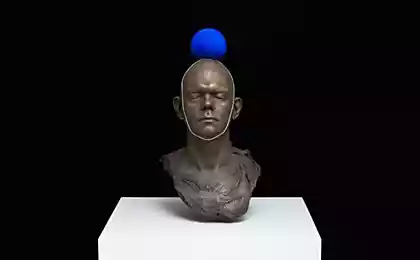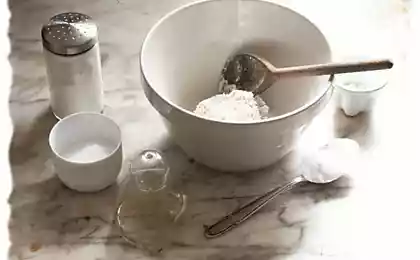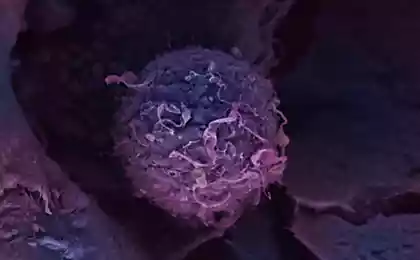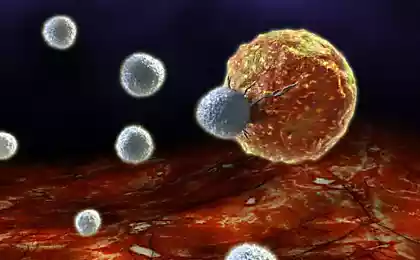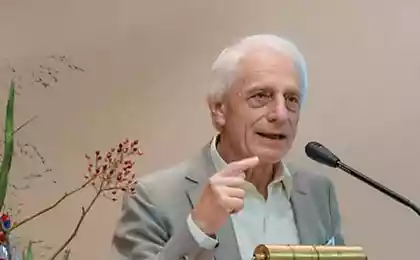451
Glitches on prescription: a brief history of psychedelic therapy
In the 1950-ies a group of psychiatrists-the pioneers showed that hallucinogenic drugs can be successfully used in the treatment of neuroses, alcoholism, and even schizophrenia. However, in the late 1960-ies the study of the effects that have these medications were prohibited by law. Published a translation of an article by The Guardian, telling of the first experiments in the field of psychedelic therapy.
Thirty million eight hundred fifty eight thousand seven hundred seventy seven
The fifth of may 1953 the novelist Aldous Huxley dissolved in a glass of water four tenths of a gram of mescaline, drank the contents, and then relaxed and began to wait, when the drugs will kick in. Huxley took the drug in his California home under the direct supervision of a psychiatrist Humphrey Osmond, whom the writer had voluntarily offered himself as "ready for anything Guinea pig".
Osmond was a member of a small group of psychiatrists who in the early 1950-ies were the first to use LSD as a treatment for alcoholism and various mental disorders. He first mentioned the term "psychedelic," which means "manifesting consciousness". And while his investigating the therapeutic potential of LSD have given promising results, in the 1960s, he was forced to interrupt its work for social and political reasons.
Born in Surrey in 1917, Osmond studied medicine at the London hospital, Thomas guy. During the Second world war he served in the military-morecomplete as a psychiatrist on the ship, and then worked in a psychiatric unit of a London hospital St George's. There Osmond and his colleague John Smiths learned that in Basel, the pharmaceutical company Sandoz, albert Hofmann discovered LSD.
Osmond and smites began its own research into the properties of hallucinogens and noticed that mescaline affects a person the same as developing schizophrenia, and that the molecular structure of this drug is very similar to the structure of epinephrine and the neurotransmitter norepinephrine. This observation led them to the conclusion that schizophrenia is caused by chemical imbalances in the brain — but this idea received no support in the scientific community.
In 1951, Osmond held the position of Deputy Director of the Institute of psychiatry in psychiatric hospital Vabarna, the canadian province of Saskatchewan. There he together with Abram Hoffer during the year, did experiments investigating the effect of LSD on the brain. Osmond himself took the drug and gave it to the volunteers — and came to the conclusion that the drug could produce profound changes in consciousness and has huge therapeutic potential.
In 1953, scientists began to offer LSD to patients with diagnosed alcoholism. The first experiments involved only two people, and by the end of 1960-ies the researchers treated in this way about two thousand patients. During this time they were joined by another psychiatrist, Colin Smith, among twenty-four patients of which twelve showed a "significant" and "noticeable" improvements in the treatment process. "There is a sense that drug use is helpful complements psychotherapy, wrote Smith in the article of 1958. The results look quite promising to continue more extensive and preferably controlled clinical trials".
Scientists argued that the impact of hallucinogens the fact that during their use the patient a fresh perspective on their condition and to rethink it
Osmond and Hoffer also said that one large dose of LSD, it seems, can be an effective tool for the treatment of alcoholism. From 40-45% of patients receiving the drug during the year no relapse occurred. Around this same time, another psychiatrist Ronald Sandison, who conducted similar experiments in the UK and encouraged by the great interest from the international media, opened at the mental hospital in Police the world's first Department specializing in LSD therapy. There were up to five patients each of whom had a separate room with a sofa and a record player. In addition, patients gathered daily in group sessions, to discuss the effectiveness of the treatment. (This experiment has failed: in 2002, the national health service of great Britain in response to the lawsuit agreed to pay a total of 195 000 pounds forty-three former patients of Sandison).
Meanwhile in Canada way LSD-therapy proposed by Osmond, has been approved by the co-founder of alcoholics anonymous, and the Director of the Bureau on alcohol in Saskatchewan. LSD therapy peaked in the late 1950-ies and in the beginning of the 1960s it was widely believed that this is the "next big breakthrough" in psychiatry, which could displace electroconvulsive therapy and psychosurgery.
Became popular two forms of LSD therapy. The first, called "psychedelic therapy", was based on the works of Osmond and Hoffer and for the entire period of treatment suggested only one large dose of LSD. Scientists argued that the impact of hallucinogens the fact that during their use the patient a fresh perspective on their condition and to rethink it.
Second, psiholiricheskie therapy, occurred according to the method of Sandison and included several small doses, gradually increasing in size. While the drugs were only a Supplement to psychoanalysis. Sandison believed that LSD is useful because it awakens similar to dreams, hallucinations, and it helps to perform subconscious of the patient and to release his long-forgotten memories.
In the period from 1950 to 1965 years about forty thousand patients have been prescribed LSD-therapy either in one or in another form — as a treatment for neurosis, schizophrenia and psychopathy. Moreover, the drug was prescribed even to children suffering from autism. Explore the potential therapeutic effects of LSD and other hallucinogens was devoted to more than a thousand scientific articles and six international conferences. But the results of many previous studies are unreliable: researchers did not take into account the data of the control groups, and negative results were excluded from the final analysis.
In any case, in 1962 the U.S. Congress passed new laws governing the safety of medicines, and Management control food and drug administration vetoed to experiment with LSD. The following year hallucinogen in the form of fluid-soaked sugar cube mass began to appear on the streets of America and Europe. Its popularity grew rapidly amongst the hippie culture, and reached its heyday in the summer of 1967.
LSD increasingly became known as a dangerous drug. In addition, its use was associated with student riots and anti-war demonstrations, so in 1968 he was prohibited by law. "I think now the time has come when society rebels against drugs, the ability to quickly send a man or to heaven, or to hell," — said the Osmond and Hoffer.
In the 1990's renewed interest in the neurobiological effects of hallucinogens. Several research groups have conducted experiments on scanning the brain of a person who has used drugs. In addition to LSD was studied the effect of psilocybin, ketamine, MDMA, in order to learn how these drugs may help patients with depression.
Huxley believed that hallucinogens open the "reducing valve" in the brain, which usually does not allow a person to think broadly. In 1963, dying of cancer, he asked his wife to give him LSD. Huxley intuitively understand what then has been confirmed scientifically. Several small studies suggests that ketamine helps with depression and anxiety state in terminally cancer patients people. This is also confirmed in the last forty years the study of LSD: the drug can reduce levels of anxiety in patients with life-threatening diseases.
Source: theoryandpractice.ru
Thirty million eight hundred fifty eight thousand seven hundred seventy seven
The fifth of may 1953 the novelist Aldous Huxley dissolved in a glass of water four tenths of a gram of mescaline, drank the contents, and then relaxed and began to wait, when the drugs will kick in. Huxley took the drug in his California home under the direct supervision of a psychiatrist Humphrey Osmond, whom the writer had voluntarily offered himself as "ready for anything Guinea pig".
Osmond was a member of a small group of psychiatrists who in the early 1950-ies were the first to use LSD as a treatment for alcoholism and various mental disorders. He first mentioned the term "psychedelic," which means "manifesting consciousness". And while his investigating the therapeutic potential of LSD have given promising results, in the 1960s, he was forced to interrupt its work for social and political reasons.
Born in Surrey in 1917, Osmond studied medicine at the London hospital, Thomas guy. During the Second world war he served in the military-morecomplete as a psychiatrist on the ship, and then worked in a psychiatric unit of a London hospital St George's. There Osmond and his colleague John Smiths learned that in Basel, the pharmaceutical company Sandoz, albert Hofmann discovered LSD.
Osmond and smites began its own research into the properties of hallucinogens and noticed that mescaline affects a person the same as developing schizophrenia, and that the molecular structure of this drug is very similar to the structure of epinephrine and the neurotransmitter norepinephrine. This observation led them to the conclusion that schizophrenia is caused by chemical imbalances in the brain — but this idea received no support in the scientific community.
In 1951, Osmond held the position of Deputy Director of the Institute of psychiatry in psychiatric hospital Vabarna, the canadian province of Saskatchewan. There he together with Abram Hoffer during the year, did experiments investigating the effect of LSD on the brain. Osmond himself took the drug and gave it to the volunteers — and came to the conclusion that the drug could produce profound changes in consciousness and has huge therapeutic potential.
In 1953, scientists began to offer LSD to patients with diagnosed alcoholism. The first experiments involved only two people, and by the end of 1960-ies the researchers treated in this way about two thousand patients. During this time they were joined by another psychiatrist, Colin Smith, among twenty-four patients of which twelve showed a "significant" and "noticeable" improvements in the treatment process. "There is a sense that drug use is helpful complements psychotherapy, wrote Smith in the article of 1958. The results look quite promising to continue more extensive and preferably controlled clinical trials".
Scientists argued that the impact of hallucinogens the fact that during their use the patient a fresh perspective on their condition and to rethink it
Osmond and Hoffer also said that one large dose of LSD, it seems, can be an effective tool for the treatment of alcoholism. From 40-45% of patients receiving the drug during the year no relapse occurred. Around this same time, another psychiatrist Ronald Sandison, who conducted similar experiments in the UK and encouraged by the great interest from the international media, opened at the mental hospital in Police the world's first Department specializing in LSD therapy. There were up to five patients each of whom had a separate room with a sofa and a record player. In addition, patients gathered daily in group sessions, to discuss the effectiveness of the treatment. (This experiment has failed: in 2002, the national health service of great Britain in response to the lawsuit agreed to pay a total of 195 000 pounds forty-three former patients of Sandison).
Meanwhile in Canada way LSD-therapy proposed by Osmond, has been approved by the co-founder of alcoholics anonymous, and the Director of the Bureau on alcohol in Saskatchewan. LSD therapy peaked in the late 1950-ies and in the beginning of the 1960s it was widely believed that this is the "next big breakthrough" in psychiatry, which could displace electroconvulsive therapy and psychosurgery.
Became popular two forms of LSD therapy. The first, called "psychedelic therapy", was based on the works of Osmond and Hoffer and for the entire period of treatment suggested only one large dose of LSD. Scientists argued that the impact of hallucinogens the fact that during their use the patient a fresh perspective on their condition and to rethink it.
Second, psiholiricheskie therapy, occurred according to the method of Sandison and included several small doses, gradually increasing in size. While the drugs were only a Supplement to psychoanalysis. Sandison believed that LSD is useful because it awakens similar to dreams, hallucinations, and it helps to perform subconscious of the patient and to release his long-forgotten memories.
In the period from 1950 to 1965 years about forty thousand patients have been prescribed LSD-therapy either in one or in another form — as a treatment for neurosis, schizophrenia and psychopathy. Moreover, the drug was prescribed even to children suffering from autism. Explore the potential therapeutic effects of LSD and other hallucinogens was devoted to more than a thousand scientific articles and six international conferences. But the results of many previous studies are unreliable: researchers did not take into account the data of the control groups, and negative results were excluded from the final analysis.
In any case, in 1962 the U.S. Congress passed new laws governing the safety of medicines, and Management control food and drug administration vetoed to experiment with LSD. The following year hallucinogen in the form of fluid-soaked sugar cube mass began to appear on the streets of America and Europe. Its popularity grew rapidly amongst the hippie culture, and reached its heyday in the summer of 1967.
LSD increasingly became known as a dangerous drug. In addition, its use was associated with student riots and anti-war demonstrations, so in 1968 he was prohibited by law. "I think now the time has come when society rebels against drugs, the ability to quickly send a man or to heaven, or to hell," — said the Osmond and Hoffer.
In the 1990's renewed interest in the neurobiological effects of hallucinogens. Several research groups have conducted experiments on scanning the brain of a person who has used drugs. In addition to LSD was studied the effect of psilocybin, ketamine, MDMA, in order to learn how these drugs may help patients with depression.
Huxley believed that hallucinogens open the "reducing valve" in the brain, which usually does not allow a person to think broadly. In 1963, dying of cancer, he asked his wife to give him LSD. Huxley intuitively understand what then has been confirmed scientifically. Several small studies suggests that ketamine helps with depression and anxiety state in terminally cancer patients people. This is also confirmed in the last forty years the study of LSD: the drug can reduce levels of anxiety in patients with life-threatening diseases.
Source: theoryandpractice.ru







